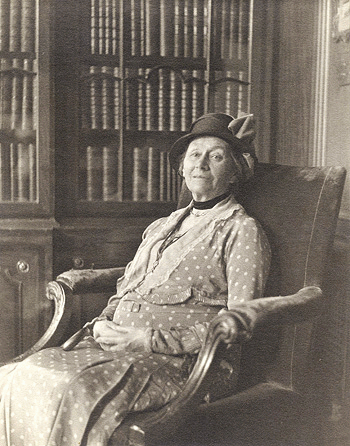Travel seasons

When it is high, low, and shoulder season in the U.K.?
The U.K. enjoys roughly the same seasonal calendar as North America, with weather similar to New England (though, yes, a bit rainier).
Summer is high season (nicest—or at least most consistently warm—weather, and, since school is out, families can take vacation); winter is low season (with the exception of the popular Christmas break creating a high season bubble); fall and spring are the shoulder seasons (temperate, though moody, weather and moderate crowds).
There are exceptions: Obvious seasonal destinations as seaside towns (crazy crowded in summer; dead in winter) and ski resorts (booming in winter—and yes, the U.K. has the ski moutains, mostly in Scotland but also in Wales and in the Pennines of England, mostly in Cumbria and County Durham).
| Know thy travel seasons | |
|
Jan 7–Mar 31 |
Low |
|
Apr 1–Jun 14 |
Shoulder |
|
June 15–Aug 31 |
High |
|
Sep 1–Oct 31 |
Shoulder |
|
Nov 1-Dec 14 |
Low |
|
Dec 15–Jan 6 |
High |
Not to belabor the obvious, but high season brings the highest prices, largest crowds, least room to bargain (and hottest temperatures; global warming has led even England to get too hot some summers, especially as many little B&Bs had never had to install A/C, so thigns can get quite stuffy).
On the plus side, high season is also often when you'll find the most festivals—plus, all the sights, restaurants, hotels, and other businesses of interest to tourists will be open and generally keeping their longest hours.
Low season has the lowest prices, smallest crowds, and most room to bargain. The downsides to low season are a chance for crummy weather—often wet in spring and fall and cold in winter, but not too bad, similar to the American Mid-Atlantic—and, especially in smaller towns and resort areas, the likelihood that many tourist sights and services will be shut down.
Shoulder season, as you might imagine, falls somewhere in between—not too crowded or too empty, generally pleasant weather, most things open—making it insanely popular among savvy travelers who are able to arrange their calendars to take advantage of it.
- Momondo.com - (Aggregator) Before I get into details, just know this: 95% of the time, I find the lowest fares on Momondo. Momondo quietly blows most of the other aggregators out of the water. It searches more than 600 airline sites, plus booking engines, search engines, travel agencies, online discounters, etc. This is two to three times as many sources as the competition—including the low-cost carriers and no-frills airlines most of the other search engines ignore—and it pays off. You can also quickly see which flight is cheapest and which quickest (and which best overall), as well as use all the usual filters on the results (length of flight, departure/arrival times, number of stops, airlines, etc.). I ran Momondo through many tests, and it almost always found the lowest available fares on domestic, Transatlantic, and inter-European flights. It found fares from carriers none of the others did, and when it did find the same flights as some of the competition, it almost invariably managed to find a lower price for it. For now, at least, I'm calling it: Momondo is the single best resource out there, bar none.Partner
- Flyinternational.com - (Consolidator) The airfares branch of AutoEurope.com consistently offers among the cheapest (and most reliable) European airfare consolidators out there. Barring some sale fare elsewhere, this is where I almost always end up buying my transatlantic tickets for the simple reason that they are almost always the cheapest. This is also why I chose to partner with them for this site.Partner
- Skyscanner.com - (Aggregator) Another excellent aggregator that, like Momondo, also includes the little low-cost carriers and no-frills airlines ignored by most other search engines. I like that you can be as vague on your departure/arrivial points as simply an entire country, rather than a specific city of airport—you never know when, say, a flght into Manchester will actually be cheaper than one to London.Partner
- Hotwire.com - (OTA) Offers regaular fare searches and Hot Rates opaque fares (cost less, but with slightly less control over departure times and other details)Partner
- VirginAtlantic.com - Given all options, I will actually pay a bit more for Virgin Atlantic flight than one on any other airline. They just treat you so much better.Partner
- Google.com/flights - (Aggregator) Google has acquired ITA, the original airfare booking engine long used by travel agents. It's now available to the general public, and niftily shows you the rough current lowest cost for flights to pretty much anywhere from your hometown via a Google map measled with red dots marking major cities around the world. It doesn't allow you to book, but will tell you where/how to book the results it finds. Not really a strong performer on internaitonal flights yet—though, oddly, does a good job with last-minute international fares, so worth checking.
- Expedia.com - (OTA) Expedia—which does a fine job on middle-of-the-road fares—is the last remaining of the Big Three online travel agencies. (Expedia bought both Travelocity and Orbitz in 2015; Travelocity's search results are now identical to those at Expsia, and we can only hope Orbitz's lackluster results follow suit.)Partner
- Hipmunk.com - (Aggregator) The aggregator that rethought how searches should be delivered—and I always like those who think outside the search box. All results are shown on a timeline, and the default sort-order for flights that match your search is "Agony"—a combination factoring in price, flight duration, and stopovers—so that the least annoying options pop up first. You can also sort more traditionally by price, duration, departure time, arrival time, non-stop only, and ask it to favor your preferred airlines (or airline alliance). One drawback: It really only serarches the airlines directly plus a few booking engines like Expedia, so you're not getting the full story (no discounters are in the mix). Still: handy.
- CheapOair.com - (OTA) Upstart consolidator and discounter using the power of the Web to weave together the best bargains and negotiated discounts with three reservations systems and fifteen travel service providers—something of a mash-up of a traditional booking service and a wholesaler. It claims 18 million exclusive flight deals, a low airfare guarantee, and 84,000 negotiated hotel rates.Partner
- Vayama.com - (Aggregator) One of the original international airfare aggregators, and still one of the better ones.Partner

 Alice Liddell, Age 7
Alice Liddell, Age 7 Alice Liddell, age 20
Alice Liddell, age 20 Alice Pleasance Liddell Hargreaves, age 80
Alice Pleasance Liddell Hargreaves, age 80




